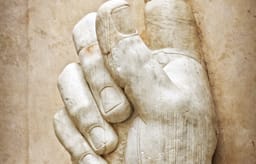Capitoline Museums
The Capitoline Museums boast the honor of being the oldest public museum in the world. It was Pope Sixtus IV who founded them in 1471, donating to the Roman people a group of bronze statues of great value, among which was the She-wolf and a colossal head of Constantine (at one time in the Basilica of Maxentius).
 The fact that the pope had given back to the city the precious objects from its glorious past gave them an even greater symbolic worth because they were put into the Campidoglio, center of religious life in ancient Rome and seat of civil law during the Middle Ages.
The fact that the pope had given back to the city the precious objects from its glorious past gave them an even greater symbolic worth because they were put into the Campidoglio, center of religious life in ancient Rome and seat of civil law during the Middle Ages.
Even now, the collections are for the most part from Rome and thus maintain their close ties to the city. In the beginning, the sculptures were placed along the exterior facade and courtyard of the Palace of the Conservators.
But the greatest increase to the collection occurred when Pope Pius V decided to cleanse the Vatican of “pagan” images which were subsequently “deported” to the Campidoglio.
Only in 1654, when the New Palace was built on the other side of the piazza, was the huge quantity of works that had been accumulated in the Palace of the Conservators finally put into reasonable order.
But the Capitoline Museum was finally opened to the public over a century later.
A few decades later, Benedict XIV founded the Pinacoteca Capitolina, an art gallery created by the assembly of two important private collections.
At the end of the 1800s when Rome became Italy's capital; due to the enormous quantity of material coming from the excavations, new exhibitions were created in the Palace of the Conservators and, in the mid-1900s, a wing of the Palace was set up to hold a new exhibition area called the Braccio Nuovo.
In 1997, to facilitate reconstruction activity, the sculptures on exhibition in the museum of the Palace of the Conservators, the New Museum and in the Braccio Nuovo were in large part temporarily transferred into the fascinating exposition space of the Centrale Montemartini, an ex-electrical power station.
Along with the Capitoline Museums, it's now possible to enjoy a stroll through the Tabularium, the ancient State archives, at last open to the public.


